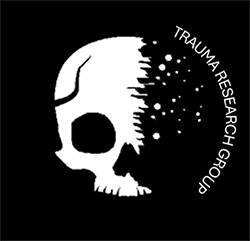
Unfortunately assault leading to physical trauma is a daily occurrence and homicide forms a major portion of unnatural deaths in South Africa. Three primary forms of trauma exist (ballistic, sharp force and blunt force trauma), which are well characterised in the literature. However, implements used to inflict trauma are constantly evolving and changing, as such characteristics of trauma need to be continuously re-evaluated. Furthermore the biomechanics associated with certain types of trauma is not yet fully understood, which may result in issues surrounding the interpretation of a wound and the mechanism of its creation.
The trauma analysis group focusses on research which is relevant both locally and internationally, ranging from basic descriptive studies to applied, hypothesis driven research. This includes analysing trends and patterns associated with different types of trauma to inform policy review and strategic intervention and the assessment of biomechanical aspects associated with trauma to improve medico-legal interpretations. Research is also conducted to investigate possible alteration of trauma, through for example burning. The primary focus is currently on blunt force trauma, however other forms of trauma are also explored.
-
Trends and patterns
- Incidence of trauma
- Trauma patterns in different road users involved in road traffic accidents
- Implements used to inflict trauma
-
Forensic biomechanics
- Determination of force and energy associated with cranial blunt force trauma
- Fracture mechanics of long bone fractures
- Biomechanics of impact by less-lethal munitions
-
Trauma alteration
- Micromorphology and morphometry of bone as a result of burning
- Changes in bone trauma as a result of burning